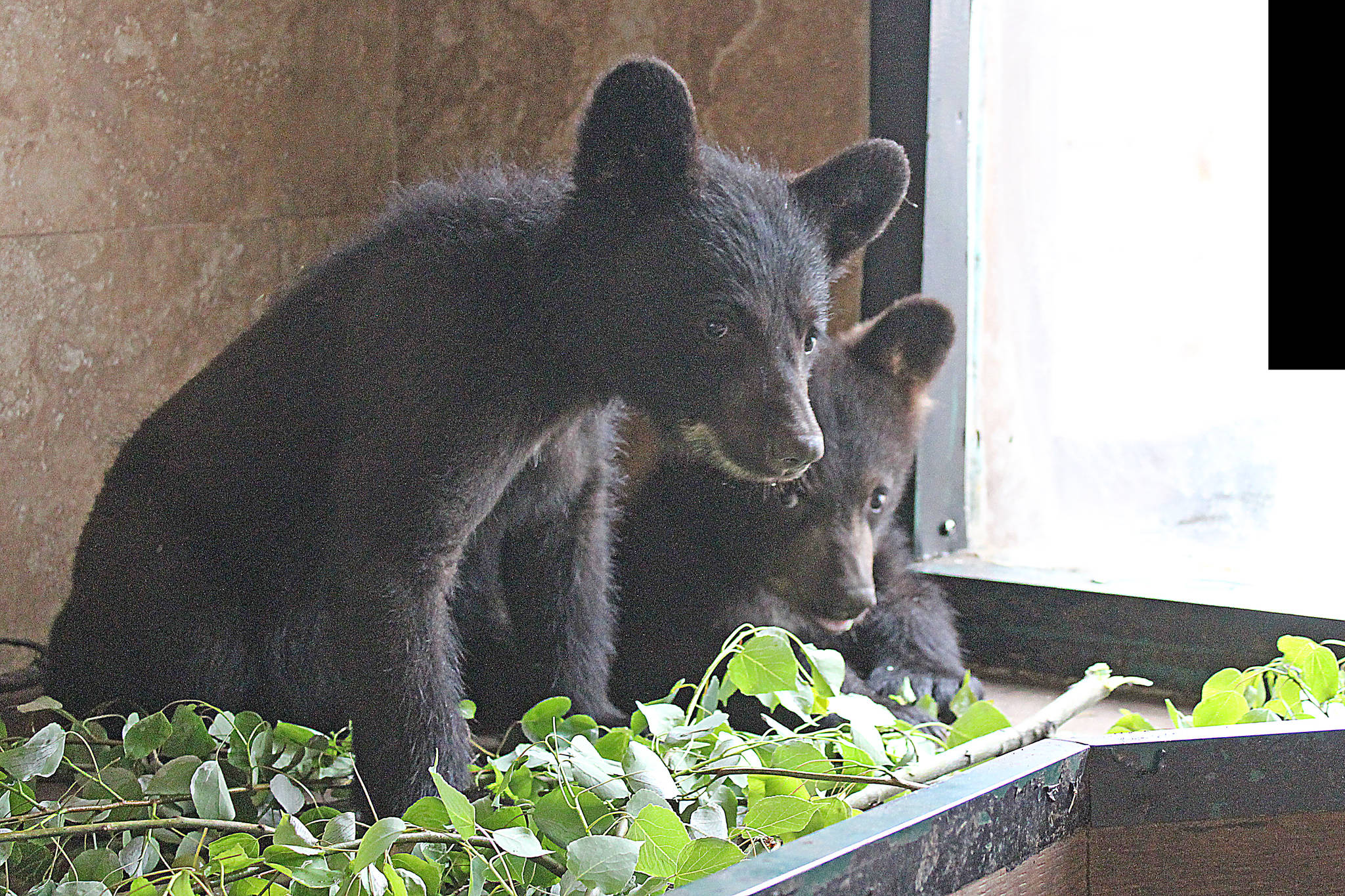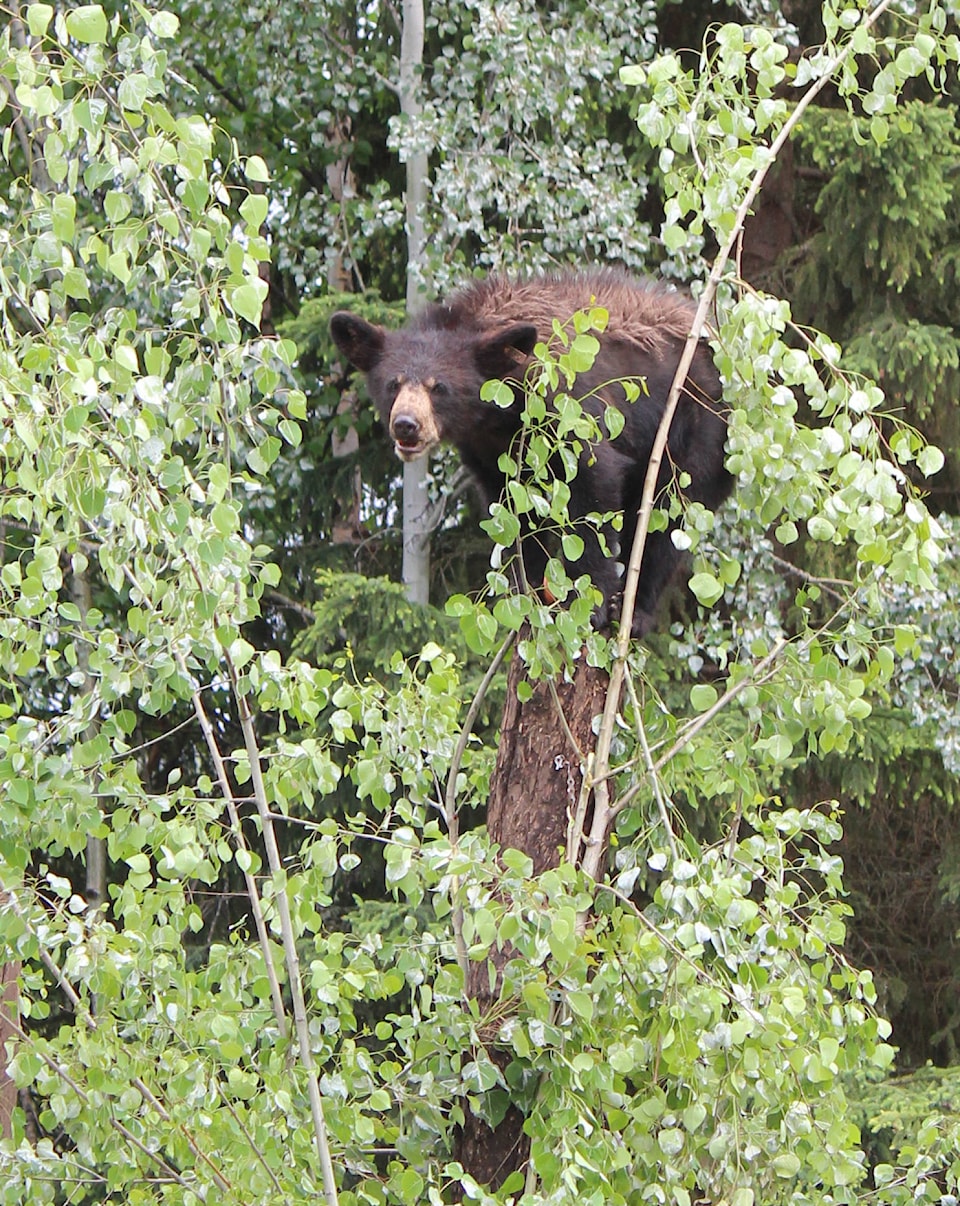Northern Lights Wildlife Shelter has begun its annual release of bears into the wild.
Last year, the shelter, located just east of Smithers on the Telkwa High Road, took in 32 black bear orphans and two grizzlies. The first three were released between Kitwanga and Houston last weekend.
Five more will be going out this weekend in the Fort St. John area and for the rest of the month, the Northern Lights team will be on the road.
sa���ʴ�ý�Wesa���ʴ�ý�ll go down towards Williams Lake and [release] bears there, then we have bears in the Prince George region, we have bears up in Telegraph Creek and Dease Lake, over to Jade City as well and then we need to go down to the Rosslyn and Castlegar area and then over to Cranbrook, so wesa���ʴ�ý�re all over B.C. in the next three weeks,sa���ʴ�ý� said Angelica Langen, Northern Lights co-founder with husband Peter Langen.
WATCH: Video of 29 black bear orphans eating breakfast at Northern Lights Animal Shelter
The two grizzlies will be released in Bella Coola.
Angelica said 2018 was a fairly typical year.
sa���ʴ�ý�Itsa���ʴ�ý�s becoming standard, between 30 and 40 bears every year, the most we had was almost 50 and we can take over 60, we have room,sa���ʴ�ý� she said.
She explained the June release is based primarily on the natural cycle of cub weaning.
sa���ʴ�ý�They always get released at about a year-and-a-half,sa���ʴ�ý� she said. sa���ʴ�ý�Thatsa���ʴ�ý�s when the mother kicks them off because shesa���ʴ�ý�s going to get bred again by a male and the male would be a danger to the cubs.
sa���ʴ�ý�This is the normal time when theysa���ʴ�ý�re genetically primed to be on their own. Theysa���ʴ�ý�re teenagers now, so they cansa���ʴ�ý�t wait to move out from home.
sa���ʴ�ý�The other reason we try to do it at this time of year is because the adults are busy with each other; theysa���ʴ�ý�re less likely to hunt the young ones down so (the cubs) have four or five weeks to kind of get their bearing and get the hell out of the area if theresa���ʴ�ý�s a big boar around.sa���ʴ�ý�
Finally, she said, the abundance of food at this time of year helps.
sa���ʴ�ý�Theresa���ʴ�ý�s lots of food and bears do share, so if theresa���ʴ�ý�s lots of food around, again, theresa���ʴ�ý�s less chance of predation.
sa���ʴ�ý�All around, itsa���ʴ�ý�s the best time for them to go out, the berries are coming now and theresa���ʴ�ý�s lots of greens, so they have a good chance of getting themselves settled and not lose a whole lot of weight.sa���ʴ�ý�
Shelter workers also try to avoid putting the cubs into a tough situation.
sa���ʴ�ý�Obviously when we drive in somewhere we donsa���ʴ�ý�t know whatsa���ʴ�ý�s living there, but we look for signs of bear activity and we try to pick areas where we donsa���ʴ�ý�t see many signs, but [where there is] good food and water.sa���ʴ�ý�
That doesnsa���ʴ�ý�t mean there isnsa���ʴ�ý�t sometimes trouble. Angelica said there have been cases when it looks like theysa���ʴ�ý�ve found a safe drop-off spot and the next thing that happens is a big male will show up.
READ MORE: Saving a bear at Northern Lights Wildlife Shelter
sa���ʴ�ý�Theresa���ʴ�ý�s nothing you can do about that,sa���ʴ�ý� she said. sa���ʴ�ý�All the areas are occupied and itsa���ʴ�ý�s normal for the young ones that they have to move.sa���ʴ�ý�
June is also the busy time of year for rescues. So far in 2019, the shelter has taken in 10 black bear cubs and one deer fawn and Angelica is anticipating many more.
The main cause is traffic, she said.
sa���ʴ�ý�The primary reason why we get bears is highway or train collisions, I would say thatsa���ʴ�ý�s about 75 per cent of the cubs we get come from those reasons.sa���ʴ�ý�
The second most common cause is nuisance bears being shot.
sa���ʴ�ý�When people leave their attractants out, and they donsa���ʴ�ý�t clean up their garbage and donsa���ʴ�ý�t like when the bear comes around and has an easy meal, then, if the calls keep coming in, the conservation officers, by law, have no other choice than taking out those bears and that then creates more orphans,sa���ʴ�ý� she explained.
Consequently, now is also the most expensive time of year for Northern Lights and the push is on to bring in the donations.
sa���ʴ�ý�Wesa���ʴ�ý�re totally funded by the public and by donations so we rely on getting these donations and that dictates how many bears we can take in,sa���ʴ�ý� Angelica said. sa���ʴ�ý�If we donsa���ʴ�ý�t get the support, we have to reduce the numbers, because we have to look after them until next year, so I need to know that we can feed them and look after them.
sa���ʴ�ý�Itsa���ʴ�ý�s always this time of year, fundraising for the kilometres that we have to cover and then also for all these little guys that are coming in now, the milk is very expensive, like a bag of bear milk is about $145 and wesa���ʴ�ý�ll go through a bag in a week-and-a-half.sa���ʴ�ý�
There is also the expense of maintenance on the pens and structures.
sa���ʴ�ý�When you have a 150-pound bear in there and you have 30 of them, they do a lot of damage,sa���ʴ�ý� she said.
editor@interior-news.com
Like us on and follow us on




